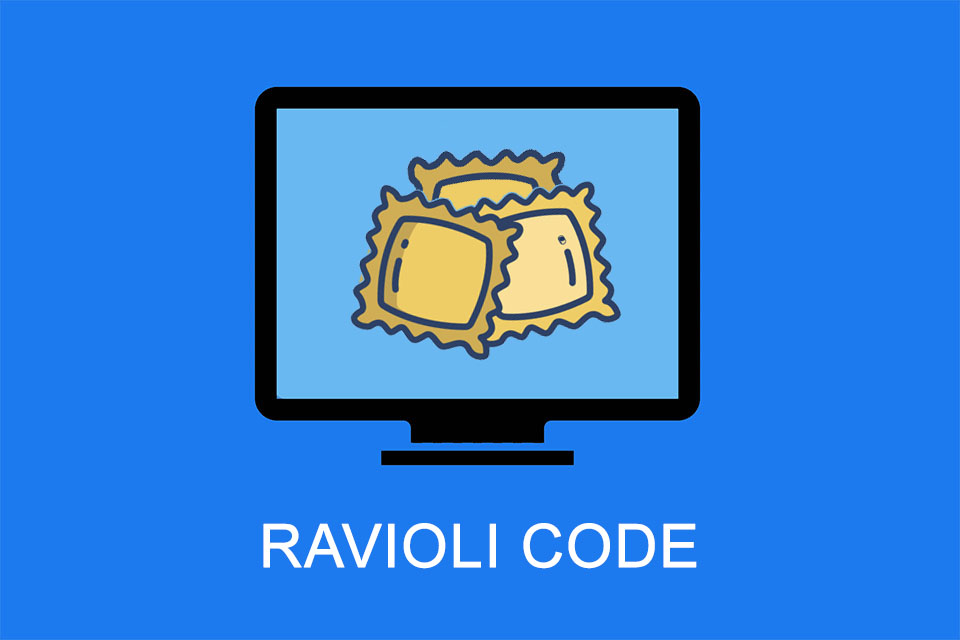What is Ravioli Code?
Ravioli code – when the number of modules harms the clarity of the code
Ravioli code is a term used in software development to describe a frequently occurring problem in the structuring of programmes. The idea behind the name comes from the idea that the code consists of many small, self-contained units – like individual ravioli in a bowl. Each of these units (often classes or methods) is well structured and comprehensible on its own. However, the problem arises when there are too many of these modules and clarity suffers. Developers have difficulty recognising the connection between the various modules, which makes it considerably more difficult to maintain and extend the code.
Disadvantages and approaches to avoid ravioli code
Ravioli code brings with it various problems that can make the development and maintenance of software more difficult. At the same time, however, there are tried and tested approaches to avoid these disadvantages.
Disadvantages of Ravioli code
One of the main problems with Ravioli code is its increased complexity. Although individual modules are easy to understand, the large number of small, isolated components makes it difficult to get an overview of the big picture. Developers often have to navigate through numerous modules to understand the programme flow, which increases the maintenance effort.
Another problem is the difficulty of maintenance. When functions are spread across many small units, it becomes difficult to find out where changes need to be made. Errors can be hidden in countless modules, which makes troubleshooting tedious.
Cohesion can also suffer as a result of excessive modularisation. Cohesion means that related functions are grouped together in one unit. If the functions are fragmented into too many small modules, it becomes difficult to recognise the connection between these modules.
Performance problems can also occur if too many small modules have to access each other frequently. This leads to an unnecessarily large number of method calls and increases runtime complexity, especially in larger applications.
Approaches to avoid ravioli code
Ravioli code can be avoided by grouping related functions and tasks into logical units. Instead of creating a separate module for each function, similar or related functions should be sensibly grouped together to maintain an overview and strengthen cohesion.
The code flow should also be clearly structured. It should always be clear how the individual parts of the code interact with each other. Simple and well-documented relationships between modules help to keep the code understandable and avoid fragmentation.
It is also important to use modularity wisely. While it makes sense to divide the code into modules, excessive division leads to problems. Developers should ask themselves whether a new module is really necessary or whether the functionality can be better integrated into an existing module.
Another approach is to avoid duplication in the code. Instead of implementing similar functions several times in different small modules, they should be centralised so that code can be reused. This promotes maintainability and prevents code bloat.
To summarise, it’s about finding the right balance between modularity and cohesion. Developers should write modular code, but make sure that the code is not so fragmented that it is difficult to penetrate.
Impulse to discuss
Is Ravioli Code a judgement rather than a technical analysis? And is it an anti-pattern?
The term ravioli code is criticised in the developer community. Some see it as an exaggerated analogy that takes the idea of spaghetti code a step further, possibly leading to the benefits of modularisation being underestimated. Especially in large, scalable systems, breaking down the code into small, maintainable units is essential. This is why many developers see the term as too negative, especially when modularisation is used correctly. The challenge lies less in the existence of small modules than in creating a meaningful connection between them.
Have you heard of the Pasta Theory of Programming? It is an analogy that links various forms of software development with types of pasta.
If you like the article or would like to discuss it, please feel free to share it in your network. And if you have any comments, please do not hesitate to send us a message.
Here you can find additional information from our Smartpedia section:



